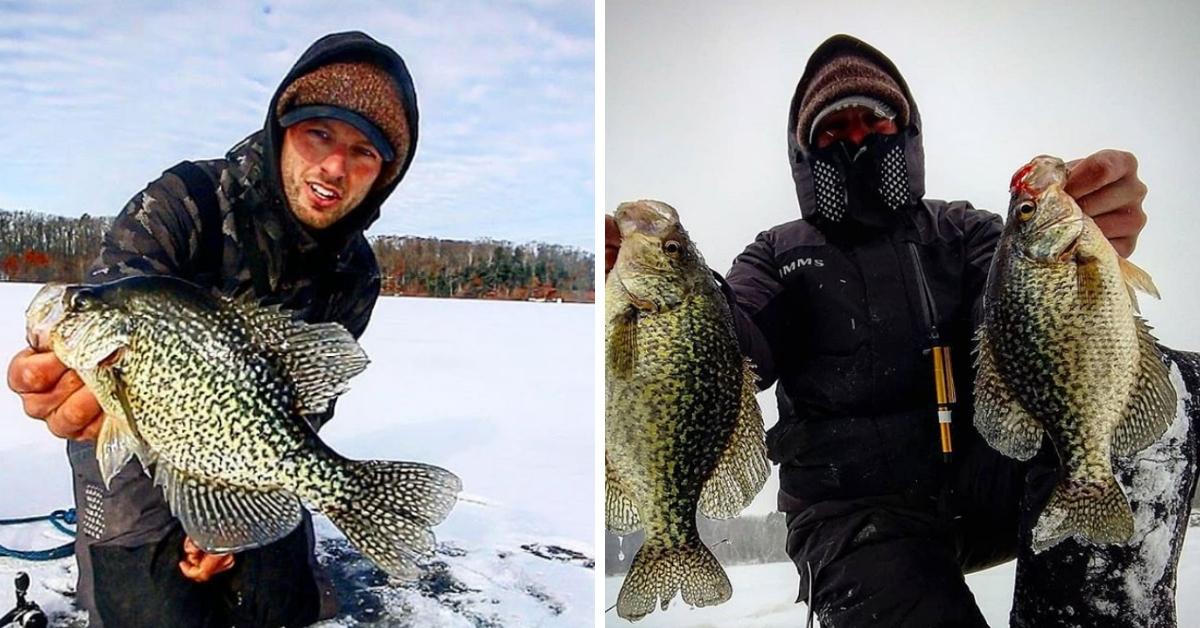Late Season Ice Fishing: How To Catch One More Tank This Winter
Late season ice fishing can be one of the best times to get on a hot bite giving anglers one final flury of fishing before the open water season. First, spring is on its way. Almost gone are the days of sub-zero temperatures, snow, and ice. Open water is on the way. Secondly, the late ice bite is about to begin. This is the time of year when panfish (crappie, sunfish, and perch) go into feeding mode as they too wait for spring to arrive. If you are willing to keep the ice gear out just a few weeks longer, you too can take advantage of this amazing bite.
Staying Safe During Last Ice
First things first, make sure to stay safe. Gauge ice conditions each time you plan a trip. Different lakes in different areas have differing ice conditions and things can turn south in a hurry if you do not plan properly. Remember, a minimum of 4 inches of ice is considered safe walking conditions. Just to be extra safe, I wouldn't recommend driving the pickup or ATV on the water during the late ice season as ice turns to slush quickly and eventually gives way to open water.
Late Ice Fishing: How To Find Fish
Late ice is a great time to load up on panfish fun if you know where to look for these fish. Before planning a trip, make sure to visit your local DNR's website to check stocking reports. This will give you an understanding of the general fish population in the lake. Smaller lakes are typically better as finding fish is relatively easy. Once you have confirmed the lake has a healthy population of fish, pull up a lake map (I recommend downloading the mobile Navionics app) and find flats areas. During late ice, panfish typically start to move shallower in anticipation of spring. However, the exact areas and depth range(s) differ from fishery to fishery.
Get yourself a lightweight auger and start drilling holes. Bring a buddy or two with you so they can check the depth of each hole with an electronic flasher unit like a Humminbird, Vexilar, or Marcum. As you check holes, note which depth range you mark fish in. Drill holes both deeper and shallower than this depth and start fishing. If the fish refuse to bite or move after you catch one or two of them, simply hop to a different hole. Being mobile is the name of the game during late ice.
The Best Baits For Targeting Late Season Slabs
Typically, panfish are more aggressive during late ice so anglers are able to use relatively larger jigs and tip them with bigger plastics or bait. Start with the largest tungsten panfish jigs in your box. If they are too big, the fish will respond accordingly quite quickly. If they refuse to bite, downsize until you find a size they will eat.
Although color typically isn't a deal breaker factor during this time of year, it is important to keep a few basic colors on hand for both jigs and plastics. Depending on water clarity and depth, panfish may prefer different color combinations so have a few rods rigged and ready. Black is a go-to color for all panfish and all water clarities. Crappie sometimes prefer ultra-vibrant colors like chartreuse, orange, and white. While bluegill like these colors at times as well, they also tend to prefer darker colors like greens and purples. Switch through colors until you find one or two that catch larger fish.
Updated December 29th, 2020 at 2:44 AM CT


